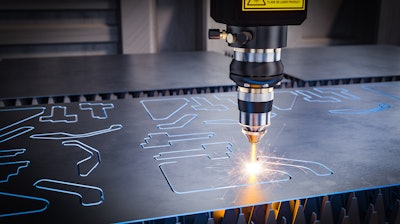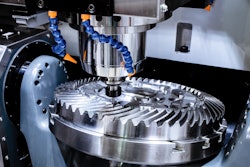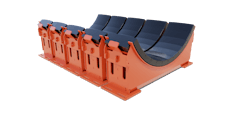
Metalforming companies expect business conditions to remain steady during the next 3 months, according to the February 2021 Precision Metalforming Association (PMA) Business Conditions Report. Prepared monthly, the report provides an economic indicator for manufacturing, sampling 112 metalforming companies in the United States and Canada.
PMA’s February report shows that 37% of metalforming companies forecast an improvement in economic activity in the next 3 months (compared to 39% in January), 56% predict no change (compared to 54% in January) and 7% anticipate a decline in activity (the same percentage reported in January).
The February report indicates that lead times continue to increase. When asked about lead times compared to the previous three months, 54% of respondents say that they have increased, up from 43% in January. By comparison, only 16% of respondents reported increased lead times in September 2020.
“While metalforming manufacturers report steady business conditions, the situation with the supply of metals to make our products has become a crisis,” said PMA President David Klotz. “Members are reporting that lead times for copper, brass and other metals are steadily increasing. Lead times for steel have gone from 4 to 6 weeks in October 2020 to 12 to 16 weeks now. U.S. manufacturers are facing high prices as well. For example, manufacturers are paying approximately 30% higher prices for steel than our competitors in Europe. If our members can’t get the metals they need when they need them, and at a competitive price, they will lose business to their competitors overseas. For steel and aluminum, PMA is calling on the Biden Administration to immediately terminate the Section 232 tariffs, which is one of the main causes for chaos in the U.S. steel market.”
READ MORE: U.S. and European Associations Call for End of Tariffs
The survey reveals little change in incoming orders in the next three months, with 48% forecasting an increase in orders (down slightly from 50% in January), 41% predicting no change (the same percentage reported in January) and 11% anticipating a decrease in orders (compared to 9% in January).
Current average daily shipping levels rose in February, with 52% reporting an increase (up from 38% in January), 31% reporting no change (compared to 50% last month) and 17% reporting a decrease (compared to 12% in January).
Only 4% of responding metalforming companies had a portion of their workforce on short time or layoff in February, a decrease from 12% in January and at the lowest level since October 2018, when only 2% had a portion of their workforce on short time or layoff.


















